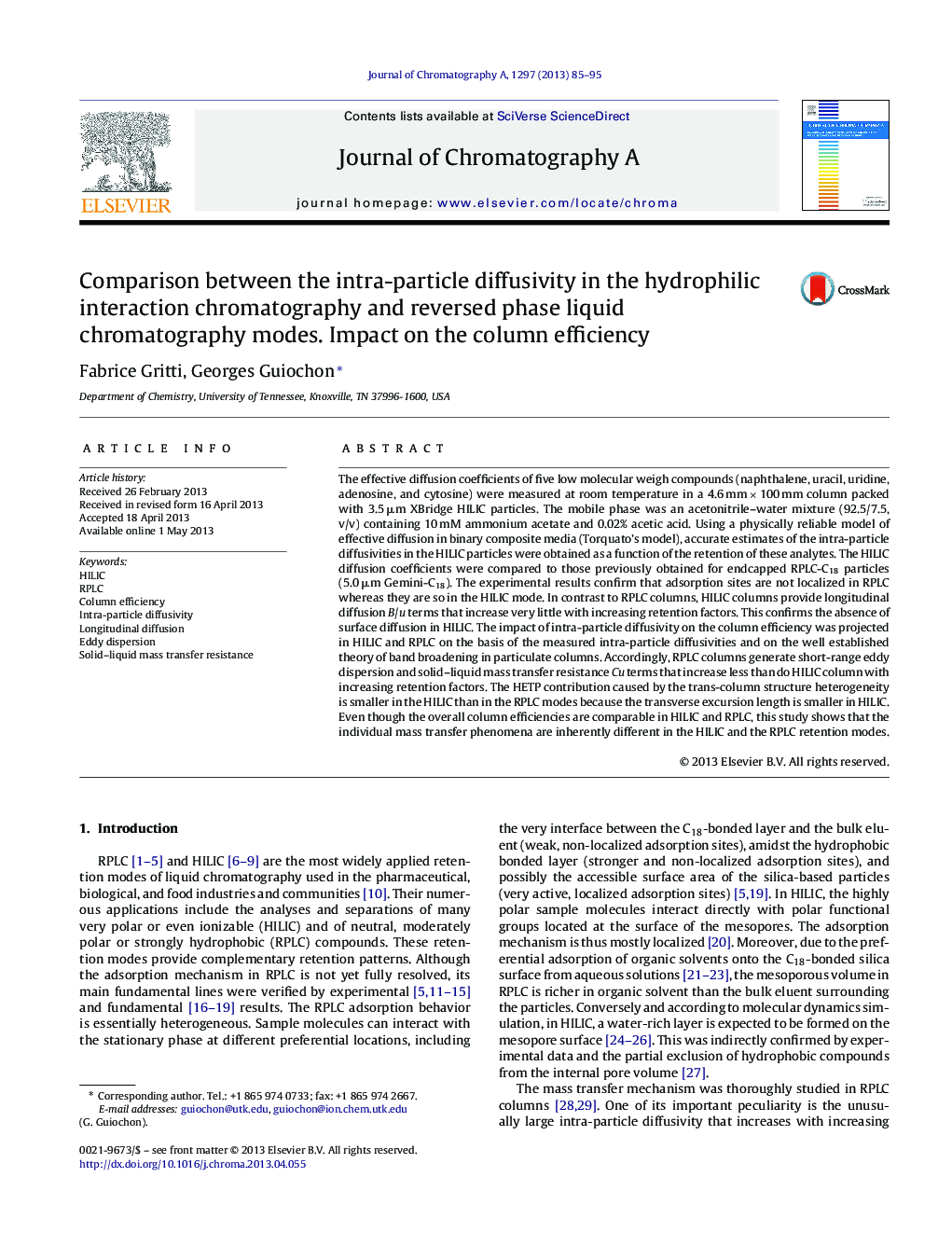| Article ID | Journal | Published Year | Pages | File Type |
|---|---|---|---|---|
| 1201531 | Journal of Chromatography A | 2013 | 11 Pages |
The effective diffusion coefficients of five low molecular weigh compounds (naphthalene, uracil, uridine, adenosine, and cytosine) were measured at room temperature in a 4.6 mm × 100 mm column packed with 3.5 μm XBridge HILIC particles. The mobile phase was an acetonitrile–water mixture (92.5/7.5, v/v) containing 10 mM ammonium acetate and 0.02% acetic acid. Using a physically reliable model of effective diffusion in binary composite media (Torquato's model), accurate estimates of the intra-particle diffusivities in the HILIC particles were obtained as a function of the retention of these analytes. The HILIC diffusion coefficients were compared to those previously obtained for endcapped RPLC-C18 particles (5.0 μm Gemini-C18). The experimental results confirm that adsorption sites are not localized in RPLC whereas they are so in the HILIC mode. In contrast to RPLC columns, HILIC columns provide longitudinal diffusion B/u terms that increase very little with increasing retention factors. This confirms the absence of surface diffusion in HILIC. The impact of intra-particle diffusivity on the column efficiency was projected in HILIC and RPLC on the basis of the measured intra-particle diffusivities and on the well established theory of band broadening in particulate columns. Accordingly, RPLC columns generate short-range eddy dispersion and solid–liquid mass transfer resistance Cu terms that increase less than do HILIC column with increasing retention factors. The HETP contribution caused by the trans-column structure heterogeneity is smaller in the HILIC than in the RPLC modes because the transverse excursion length is smaller in HILIC. Even though the overall column efficiencies are comparable in HILIC and RPLC, this study shows that the individual mass transfer phenomena are inherently different in the HILIC and the RPLC retention modes.
•Surface diffusion of adsorbates is important in RPLC but negligible in HILIC modes.•As a consequence the axial diffusion HETP term is larger in RPLC than in HILIC.•It increases faster with increasing retention time in RPLC than in HILIC.•The eddy dispersion and mass transfer resistance HETP terms are lower in RPLC than in HILIC.•These effects compensate largely and the efficiencies of comparable columns are close.
